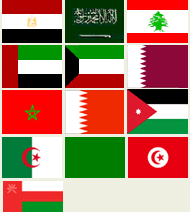Consumer demand trends in individual countries:
Asia/ India• Overall consumer demand in India in the first quarter of 2006 declined by 27% to 145 tonnes. This was largely driven by the sensitivity of the Indian market toward price volatility.
• Jewellery demand reacted sharply to price volatility, falling 38% on the previous year which was an exceptionally strong performing quarter.
• Sentiment within India, in part aided by media commentary, became increasingly attuned to the belief that gold prices would continue to rise, thereby providing some support to consumer demand in the jewellery market. Demand during the key festival of Akshaya Thrithiya, on April 30, appears to have been higher than in 2005.
• Despite an overall decline in demand, net retail investment boomed, rising 32% on the same period in 2005, itself 90% higher than that of 2004. Two factors propelled this higher: increased promotion by banks following the success of earlier WGC-assisted campaigns; and the general belief that prices will continue to rise, whereby individuals are actively purchasing gold coins and small bars with the view of turning them into jewellery at a future date.
Saudi Arabia• Saudi Arabia witnessed a stock market crash in February 2006, affecting both consumer sentimentand the purchasing power of high-income individuals for the first quarter. Against this background, the rising price of gold proved a heavy deterrent to jewellery purchases which dropped 30% on the previous year.
UAE and the Gulf• Consumer demand in the UAE suffered heavily in the first quarter of 2006 as the country mourned the death of the Ruler of Dubai. The Dubai Shopping Festival, a key period for gold sales in the region, took place over this period and as a result was scaled down.
• The first quarter in Kuwait followed a broadly similar scenario whereby a mourning period for the death of the Emir in January, negatively impacted consumer demand for gold.
Turkey• Turkish jewellery demand was 43% lower year-on-year, although again the comparison is with an exceptionally high quarter in 2005. The rise in gold price was the major cause; however its impact was exacerbated to a small extent by an 11% fall in tourist numbers.
• The rising price encouraged gold investment during the quarter, producing the second highest
quarter ever recorded for gold investment in Turkey.
Europe and United States
Europe• In Italy, spending on luxury products, including jewellery, continues to be constrained by weak
employment growth and falling real wages.
• In the UK, purchases of all forms of jewellery remained subdued. Both in the UK and Italy it was clear that demand for higher quality, more fashionable and stylish pieces continued, while plainer mainstream items suffered.
www.gold.org• There has been little change in the trend of European retail investment, with new buying offset by dishoarding and profit taking. Dishoarding from France, essentially younger people selling inherited gold, still dominates the overall picture.
U.S.A.
• While the US economy started the year in robust form, signs of emerging weakness resulted in
tighter consumer spending on luxury goods. Combined with the rising price of gold, this resulted in a 5% decrease in jewellery demand in tonnage terms on the same period in 2005. Nevertheless, this equates to a 23% increase in underlying gold value.
• In contrast to jewellery, buying of coins and small bars has been strong in the US, rising 41% above year-earlier levels.




